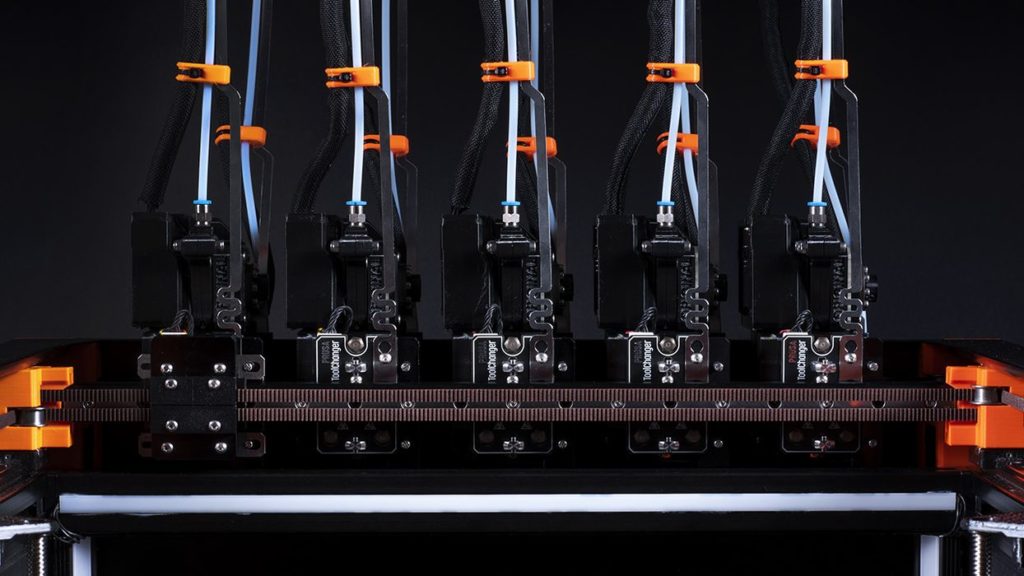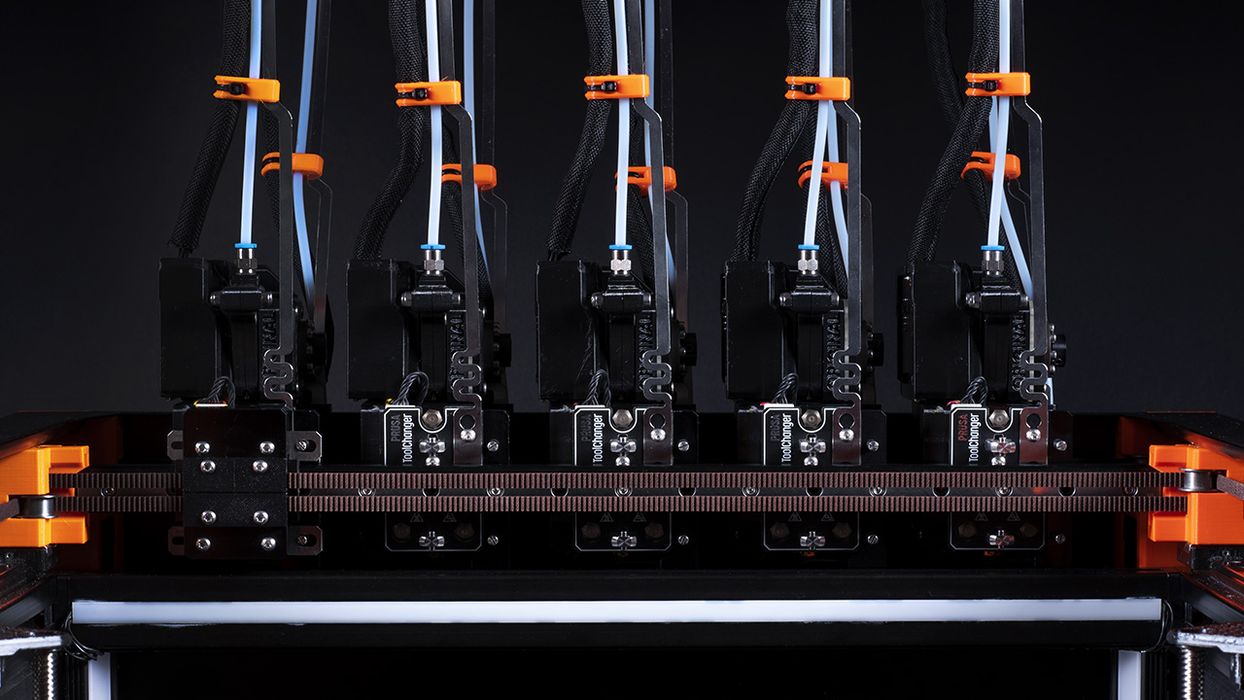
Last week Prusa Research unveiled their new Original Prusa XL large format 3D printer, and there are a number of interesting implications.
If you hadn’t heard, the XL is a larger volume FFF 3D printer with a build volume of 360 x 360 x 360 mm. It uses a unique (for Prusa Research) CoreXY motion system, and includes a number of advanced features designed to increase print reliability. The major one seems to be an advanced extrusion system that includes powerful sensors that can implement several interesting monitoring capabilities.
One of the most shocking new features is that the device is a tool changer. It can have up to five separate toolheads that are dynamically swapped in as a print job proceeds. This allows for multicolor 3D prints, but more importantly, also allows for the use of soluble support material.
The device is now available for pre-order at a price starting at US$1999 and heading upwards to a maxed-out configuration at US$3499.
After thinking about this development for a few days, I have a number of thoughts and questions about the trajectory of Prusa Research. Let’s go through this one item at a time.
Prusa XL Feature Dribble Down
Often companies produce high-end products, and then eventually dribble down some features for the lower-end models. I’m wondering how much of this effect could take place at Prusa Research after the introduction of the XL.
The XL includes a number of fascinating features, such as the Nextruder, which appears to be a highly reliable component with a great deal of capability. Could a future “MK4” include the Nextruder, or a variation thereof?
Some features on the XL will obviously not dribble down, like the zoned heat bed. That’s only useful for larger 3D print volumes, which is not present on Prusa Research’s lower end devices. Ditto for the large spool capacity.
There are a number of reliability features on the XL, and perhaps these could appear on lower end devices. On the other hand, the need for high reliability is paramount on larger-format 3D printers: the risk of a failure just costs too much time and material. Those risks are not present on smaller devices, so perhaps the added reliability is not worth the cost.
The tool changing feature, however, is quite interesting. Prusa Research does provide a multimaterial option for their MK2 and MK3 devices: the MMU2S. This optional addition can swap the input filament between five spools, and thus achieve multimaterial functionality.
Unfortunately, the MMU2S is a notoriously finicky device that requires very precise tuning that some buyers are unable to achieve.
Could the tool changer capability make its way to smaller devices to replace the tricky MMU2S? I don’t think so: there is simply too much hardware required to enable a reasonable price for those buyers. In the end, I think this means that most serious multimaterial operators are going to have to buy the XL instead of the MMU2S.
Prusa XL Cost
The cost of the XL is quite a bit more than the flagship MK3S device, and literally 10X the cost of the recently introduced Prusa Mini.
With this device, FFF buyers looking at the Prusa Research product line will find a range of machines available at different price points: under US$500, under US$1000, under US$2000 and under US$4000. There’s something here for anyone, at almost any price point.
That means there are very different markets being addressed by the company; a buyer of a Mini would very likely have no interest at all in the XL, for example.
Prusa Research is opening up a new market here, and it’s professional 3D printing. The ability to print highly complex 3D models with soluble support is a key feature for this market, as is the reliability: you don’t want expensive designers and engineers wasting time fiddling around with print settings.
My worry here is that Prusa fans who like to buy new models as they come out may not realize this, and see the XL as an extension of the existing products. The Prusa XL is not for intermittent casual use like many use the MK3S. Sure, it has many great features, but how many of Prusa Research’s current customer base would truly need an XL?
Prusa Research Company Trajectory
There’s a question that comes up whenever a desktop 3D printer manufacturer offers professional or industrial equipment: “Is this the market the company will address in the future?”
This has happened many times in the past at other companies. The most notable was MakerBot, which began as a desktop 3D printer company dedicated to hobbyists and the DIY community, but then as a result of investment and competition from inexpensive Asian manufacturers, was forced to abandon their community and shift into professional and educational markets.
The same could be said of Ultimaker, which began the same way, as a producer of inexpensive desktop 3D printers for DIYers. I recall many years ago when Ultimaker roamed around Euromold with a printer in a backpack. Periodically they would stop walking to set up the printer on the floor and show people how it worked. They’ve come a long way since then, as now they market towards professionals in large corporations. Ultimaker hasn’t introduced an inexpensive DIY machine for a very long time, and probably will never do so again.
These and other companies switch markets because there’s simply more profit available in these markets. They can manufacture a smaller number of units and make the same amount of profit. They can surround their products with ecosystems that make them “sticky” and successfully thwart attacks by inexpensive alternatives. It’s a business model that definitely works.
But could Prusa Research be also heading that way? Could they eventually abandon their original market, just as MakerBot, Ultimaker and others did? What if they find the XL to be incredibly profitable as it opens up new markets to the company? Can they keep ahead of the inexpensive competitors, which keep increasing their capabilities? Is the XL the beginning of Prusa Research’s move to a professional market?
On the other hand, Prusa Research’s community is perhaps the strongest in the industry for inexpensive desktop equipment. They make and sell more units than practically any other 3D printer manufacturer. They have continued to innovate in the desktop area and provide a truly open window into their activities. They’ve made it work so far, and there is no reason to think they cannot in the future.
On yet another hand, if I had one, would be the fact that Prusa Research, as far as I can tell, has not obtained significant funding from venture capitalists, who might have demanded a switch in strategy. That strategy switch scenario may not be in the company’s future.
I don’t know how this will play out, but at the very least Prusa Research will learn a great deal about the professional 3D printer market with the new XL 3D printer.
Via Prusa Research

